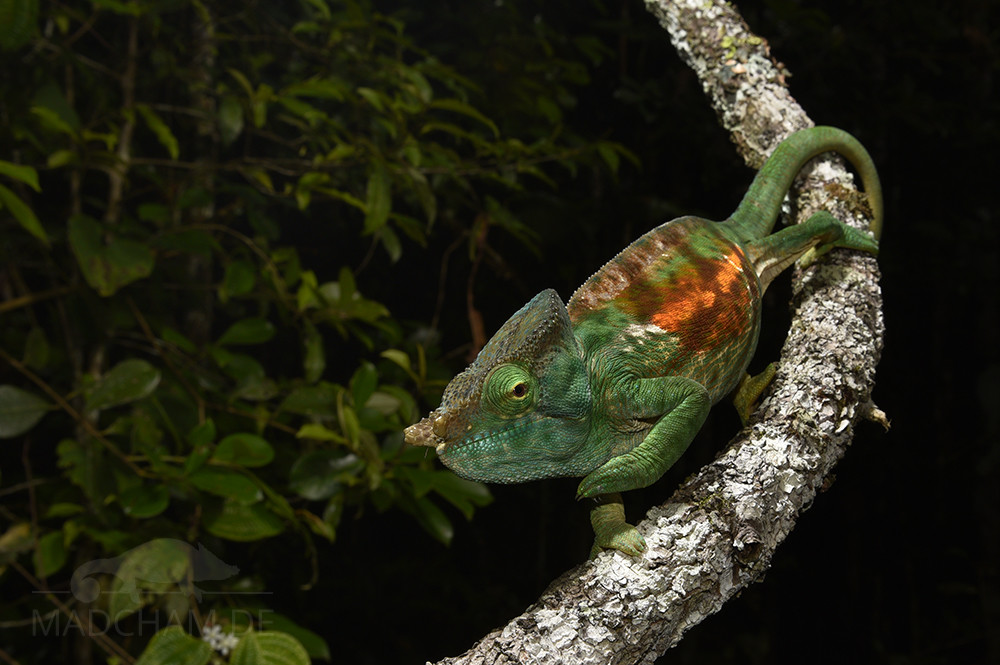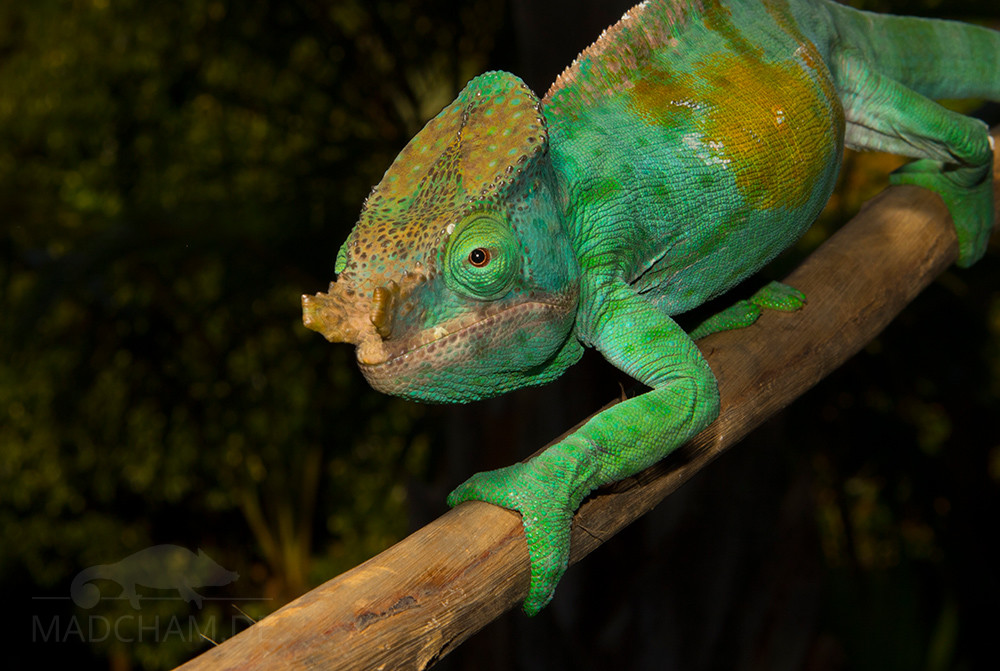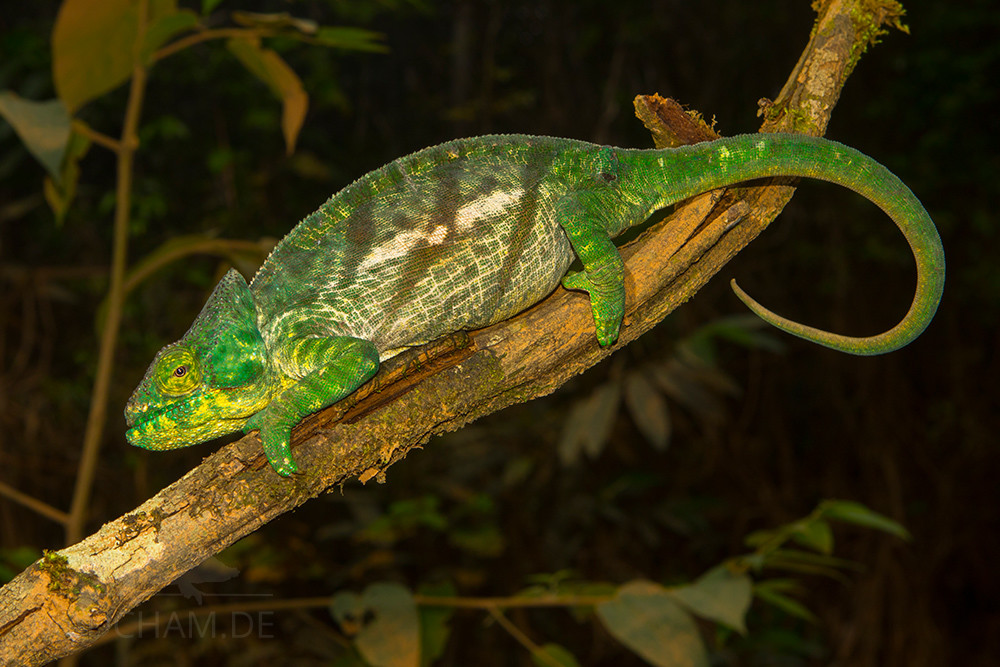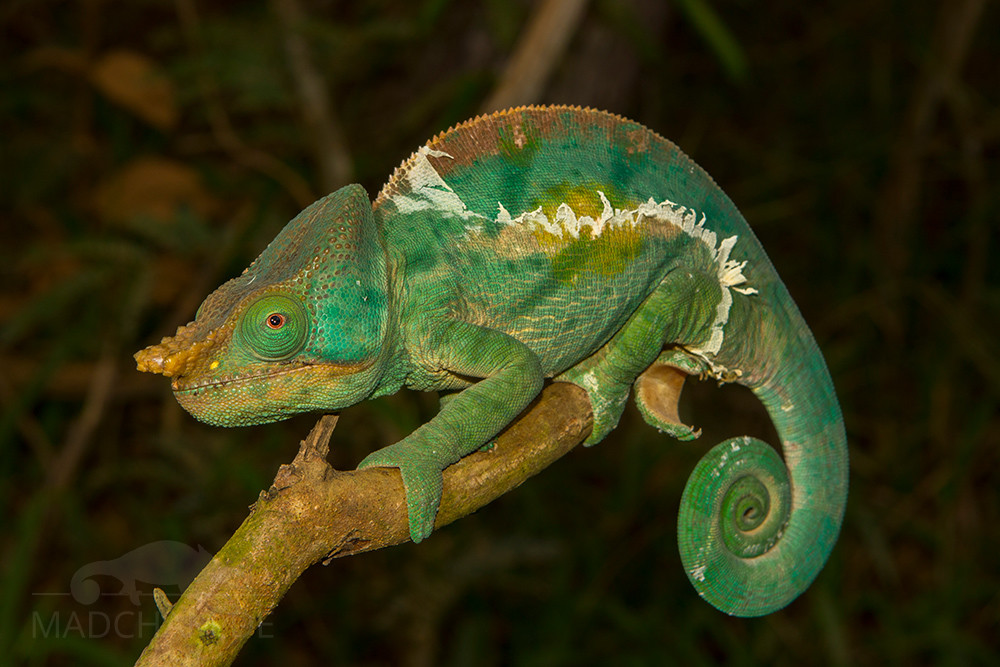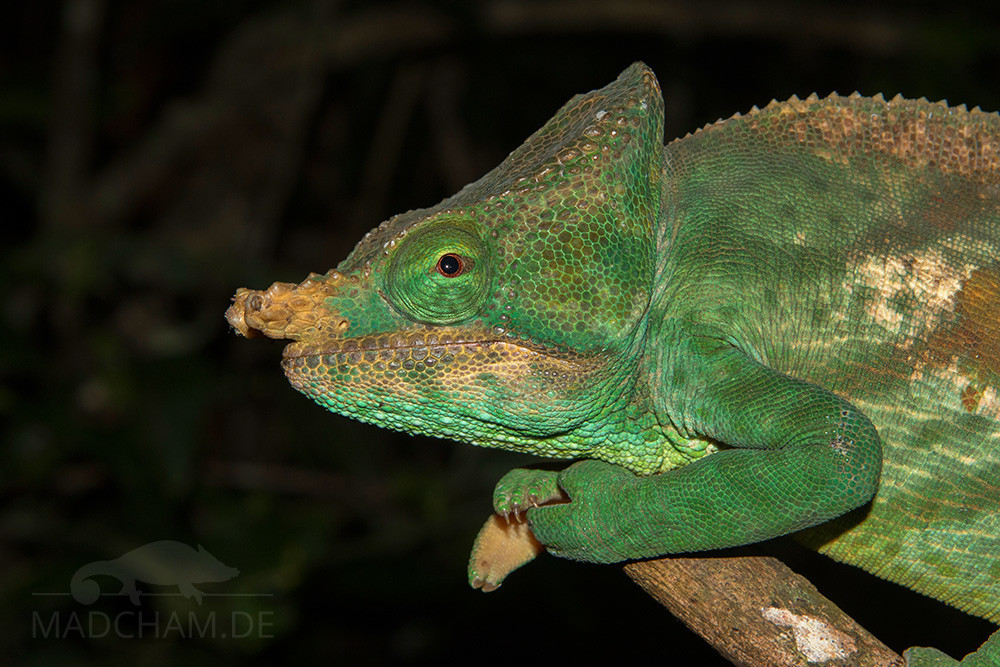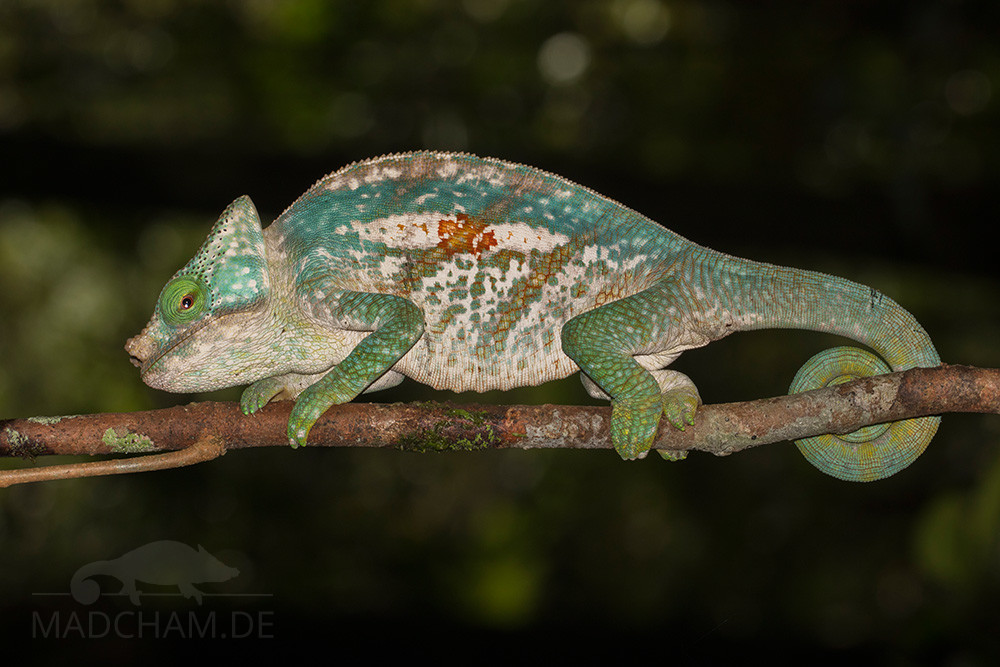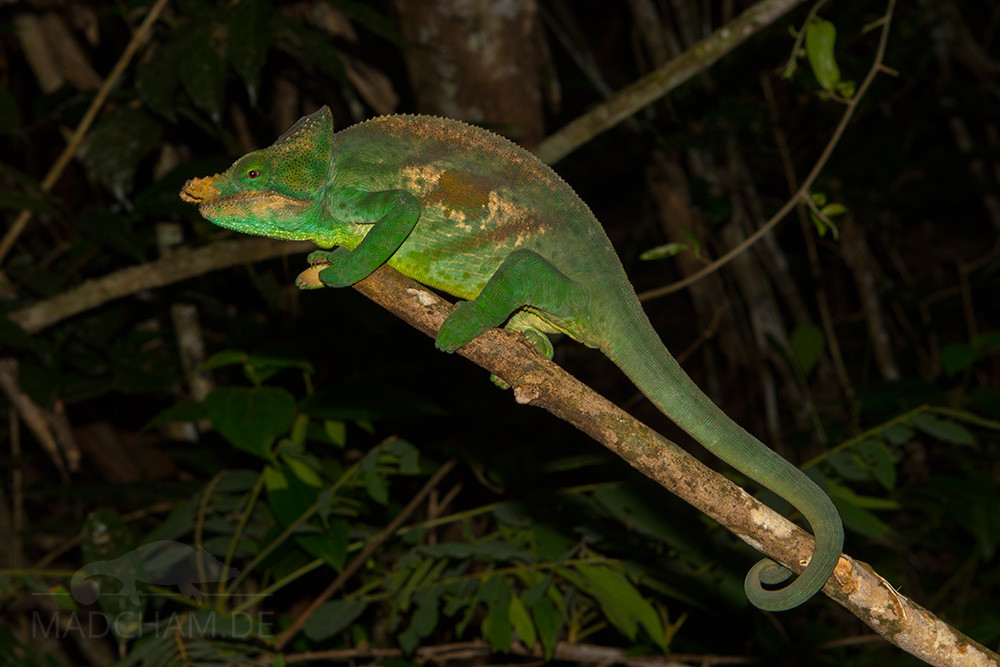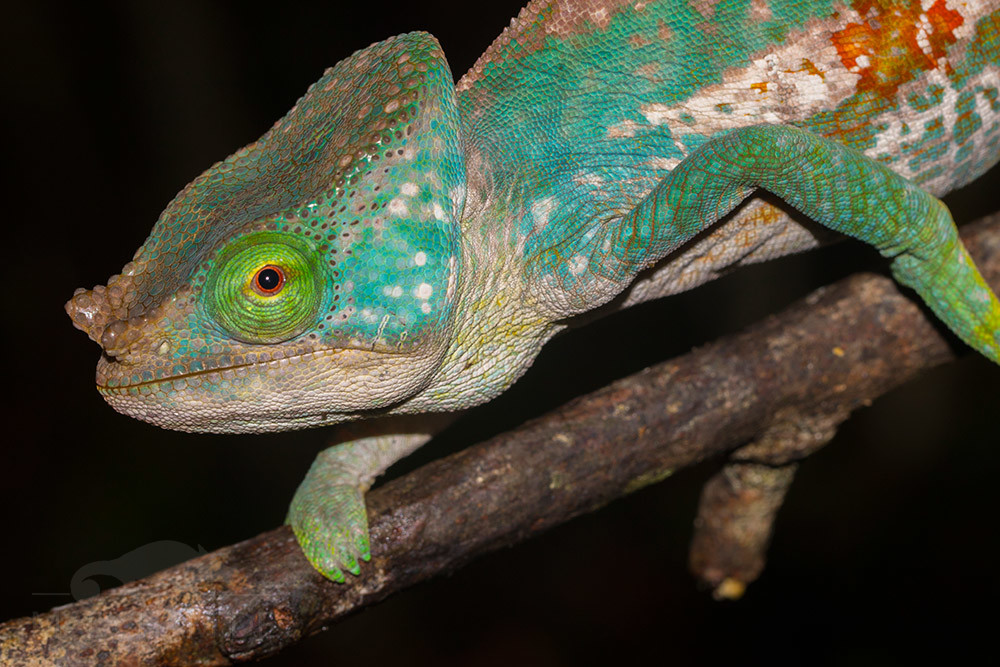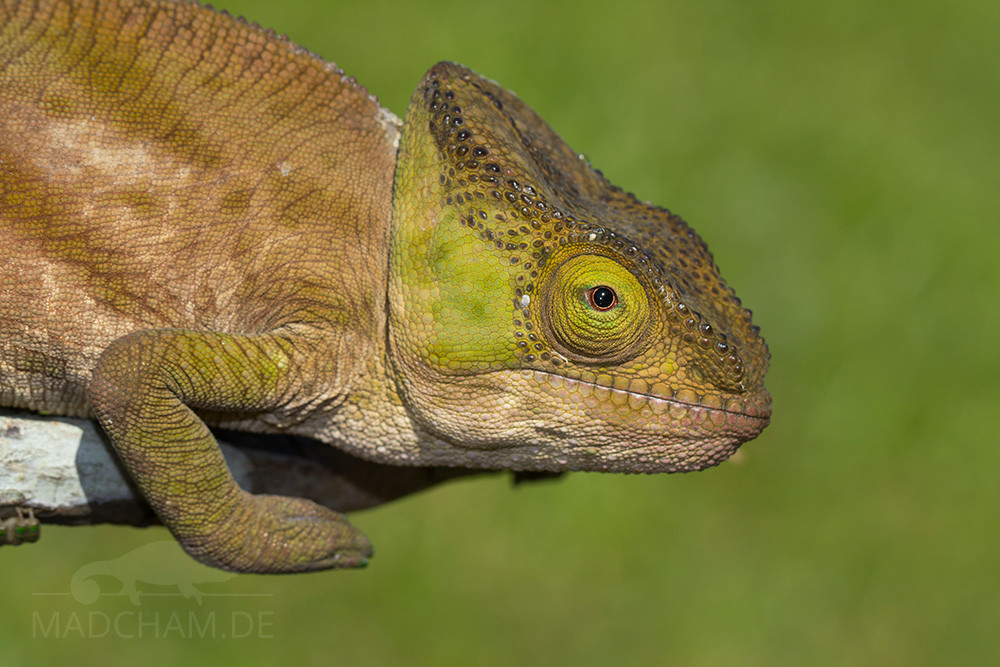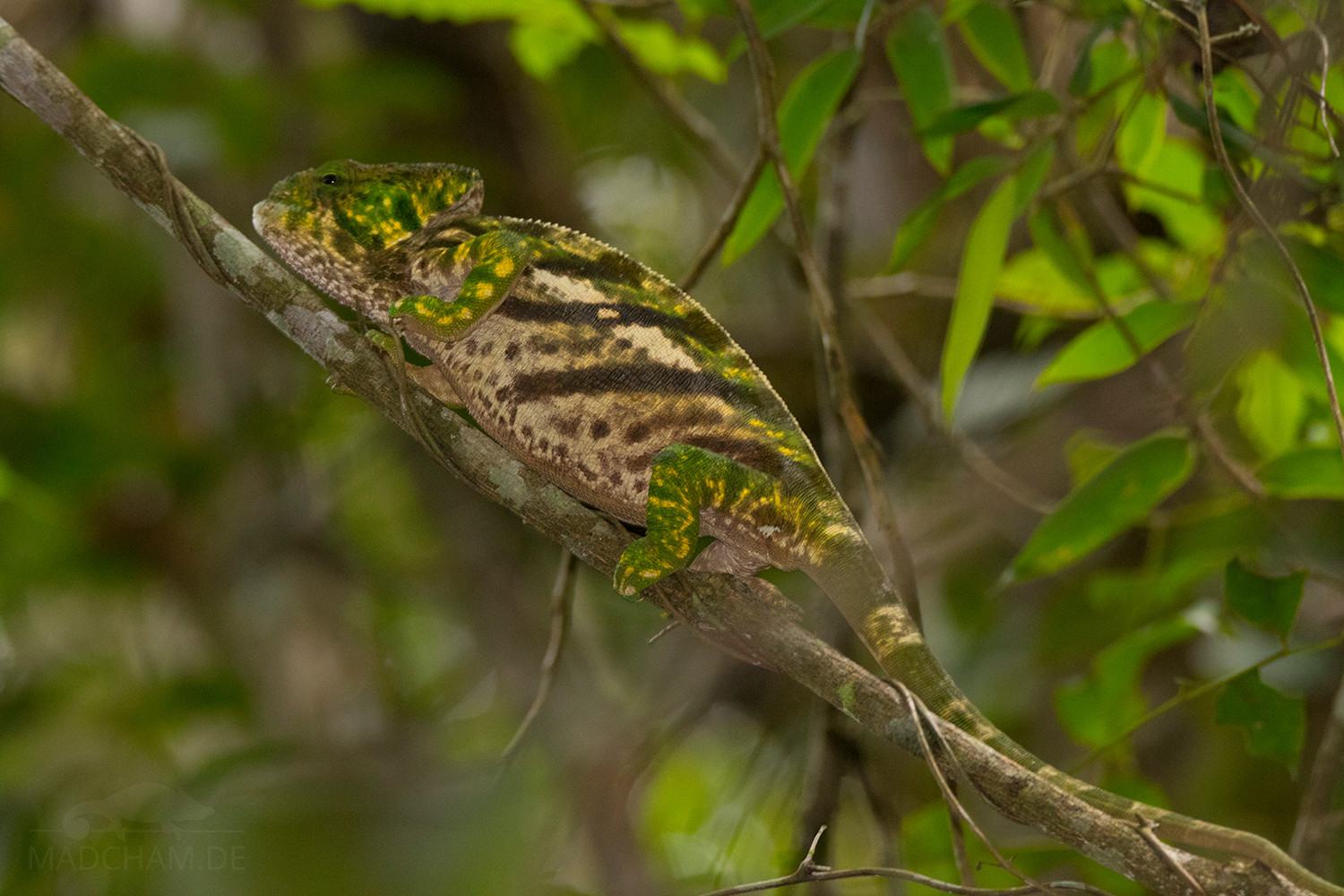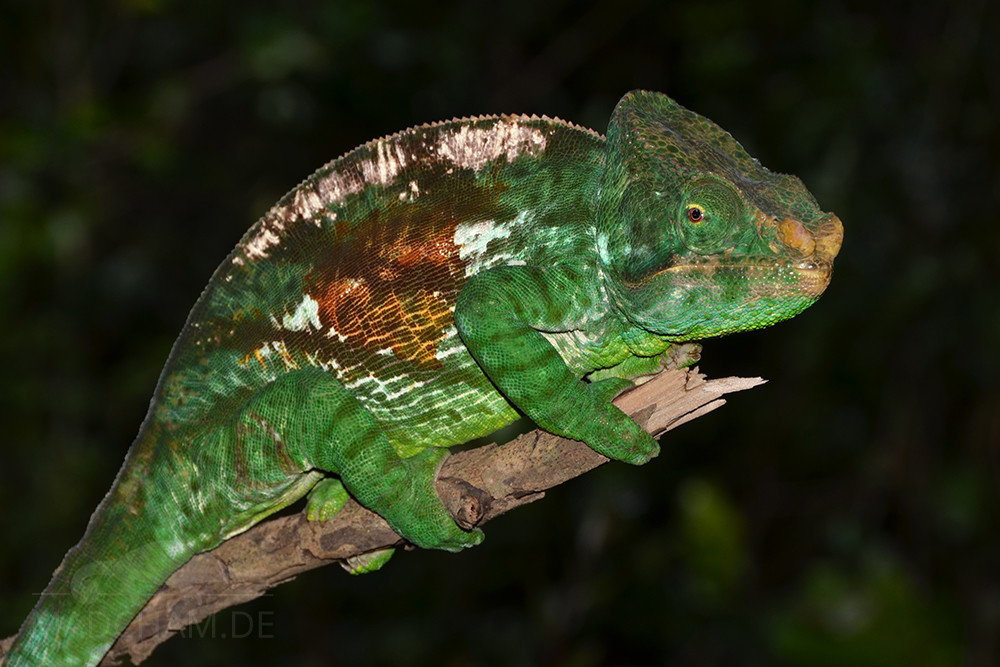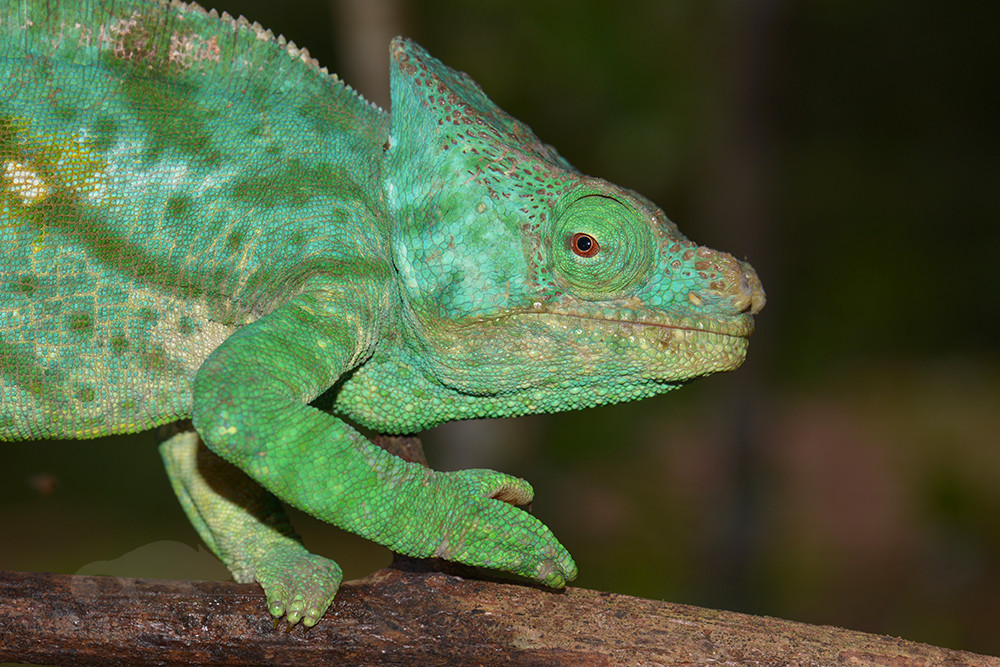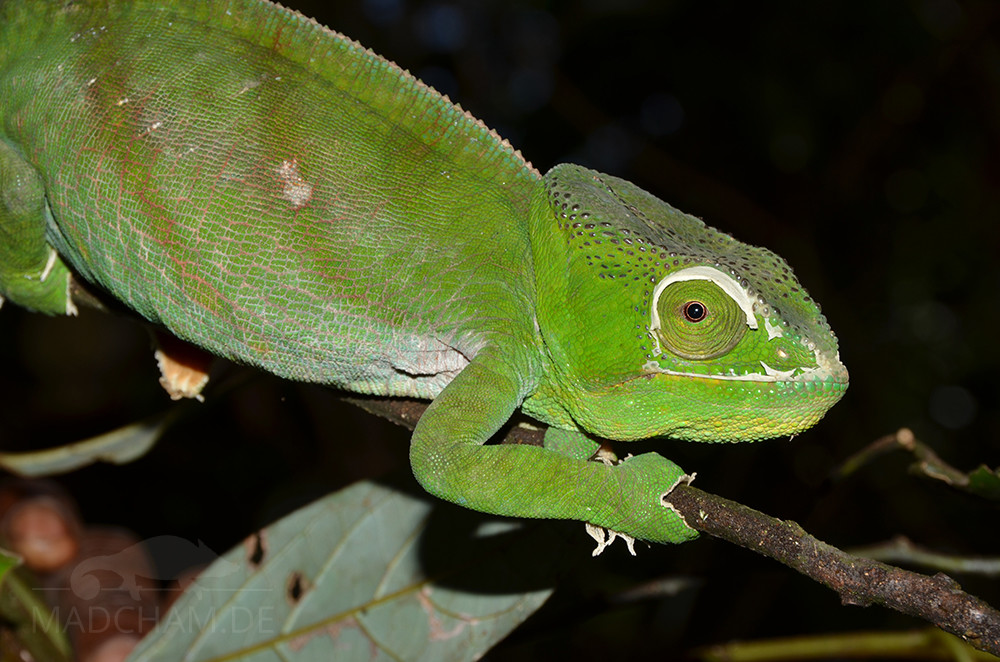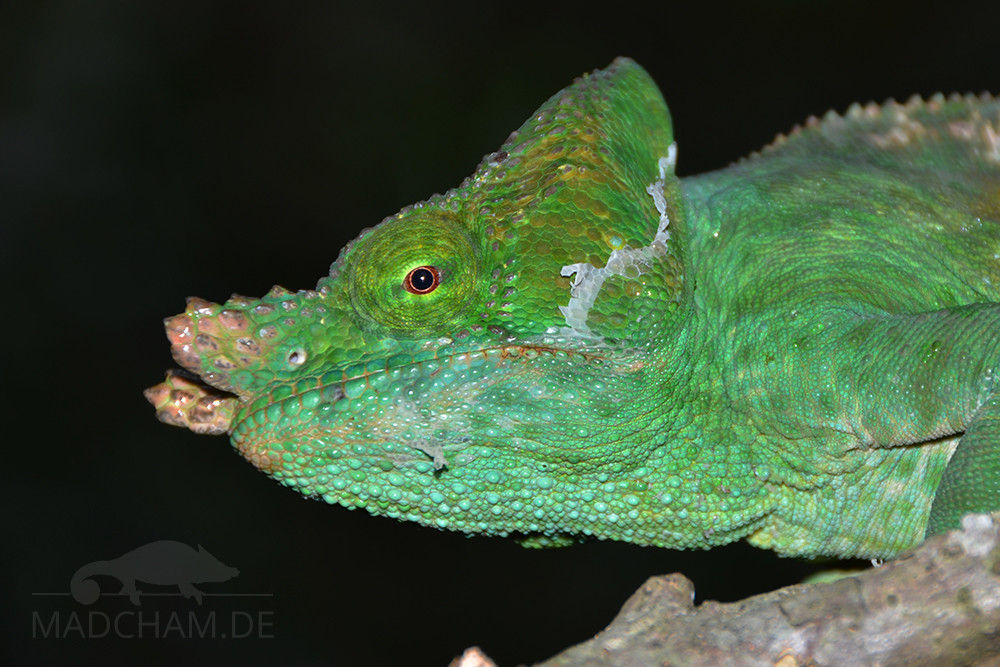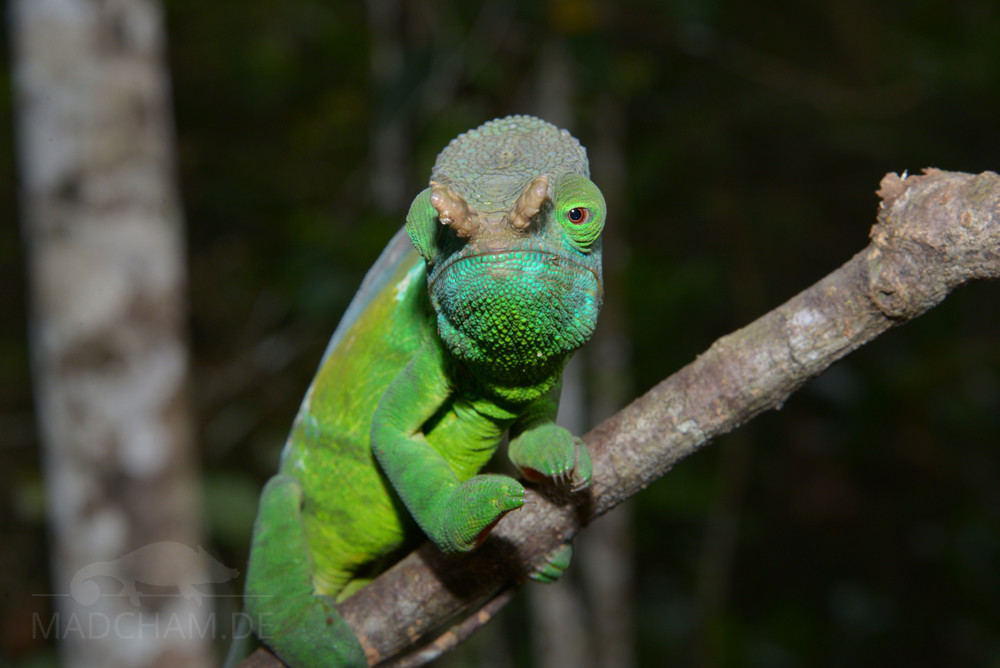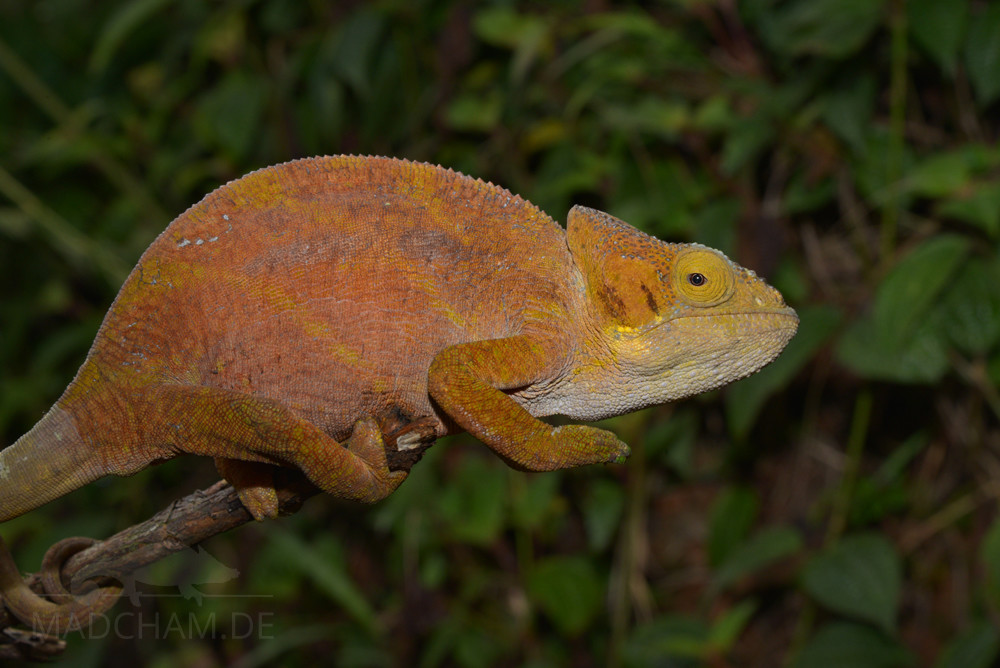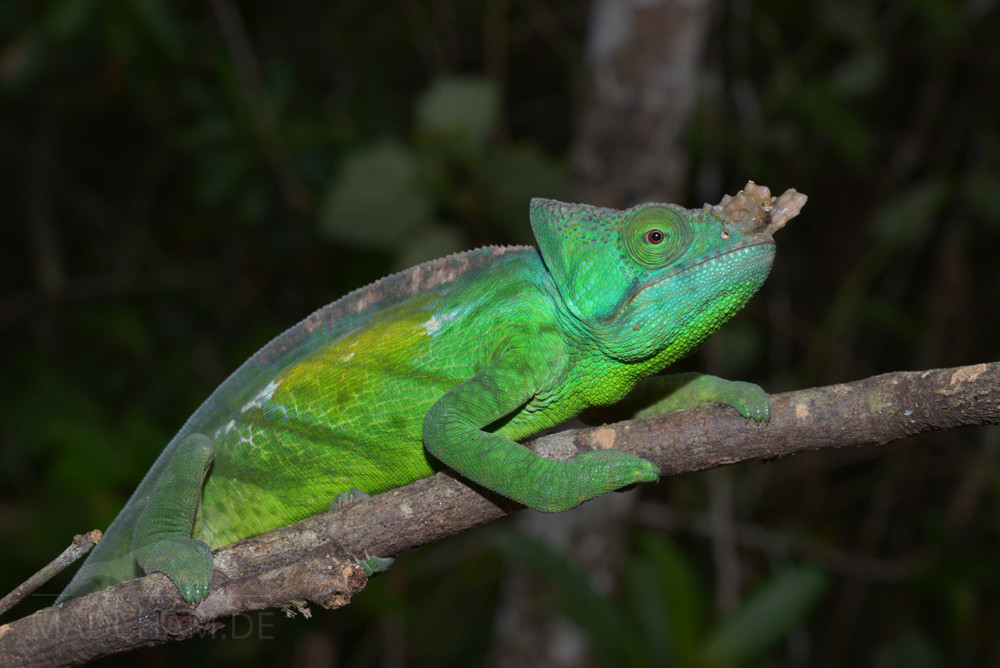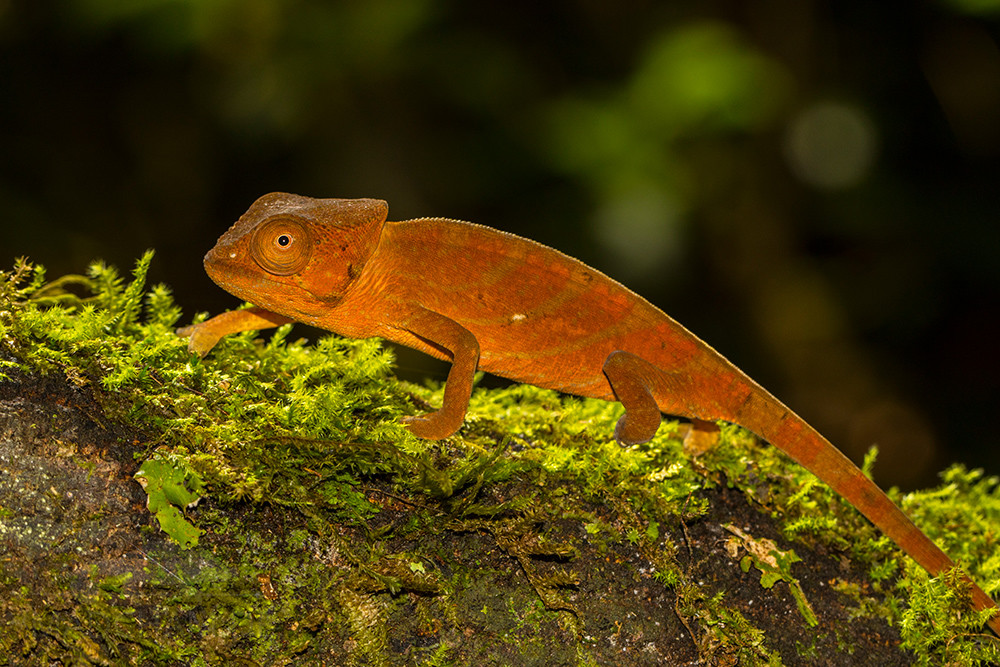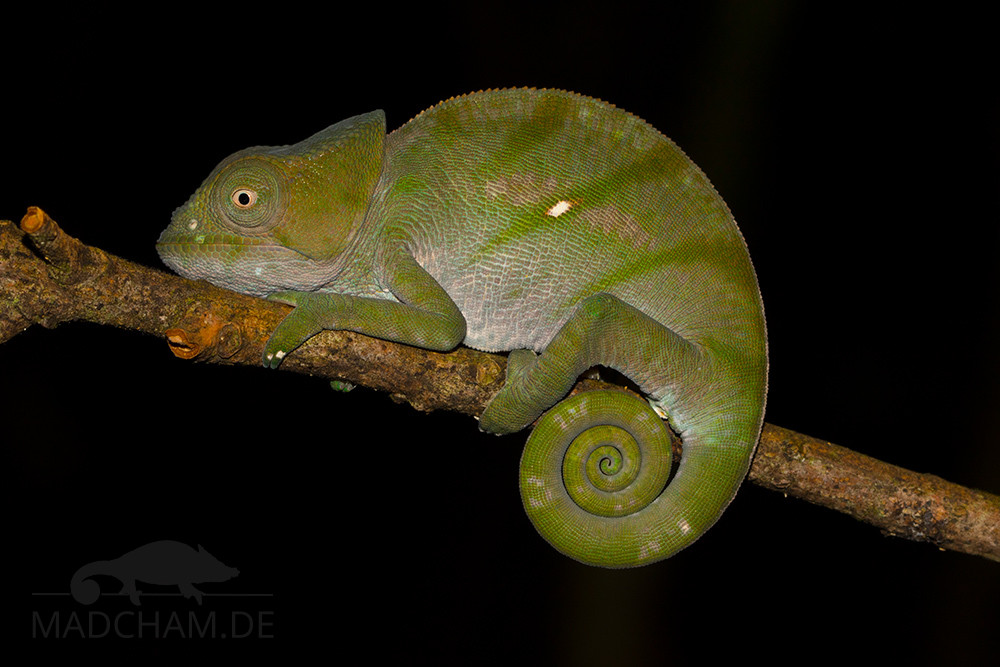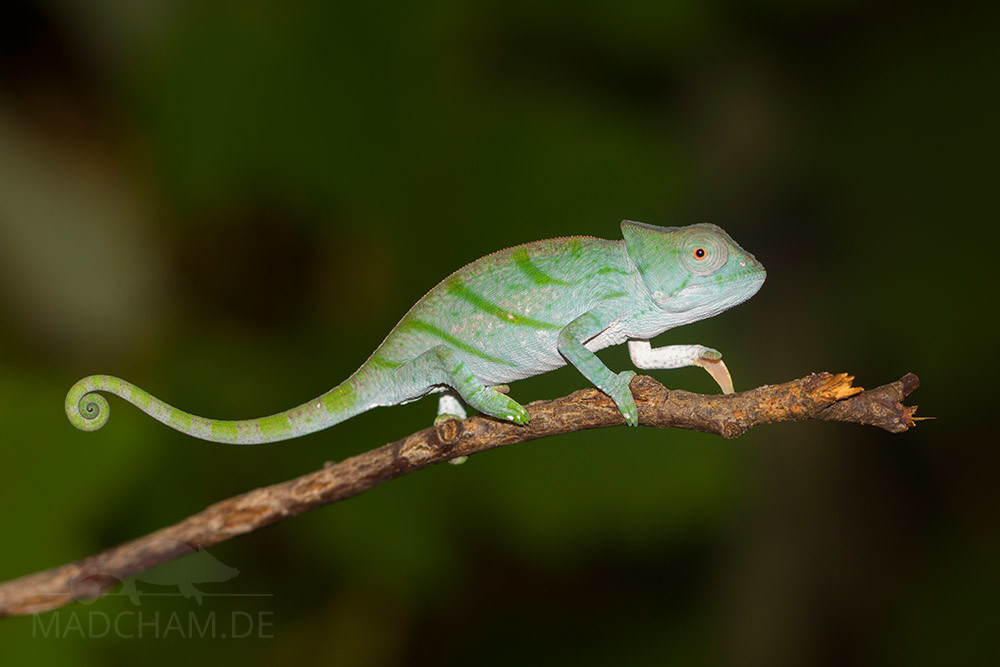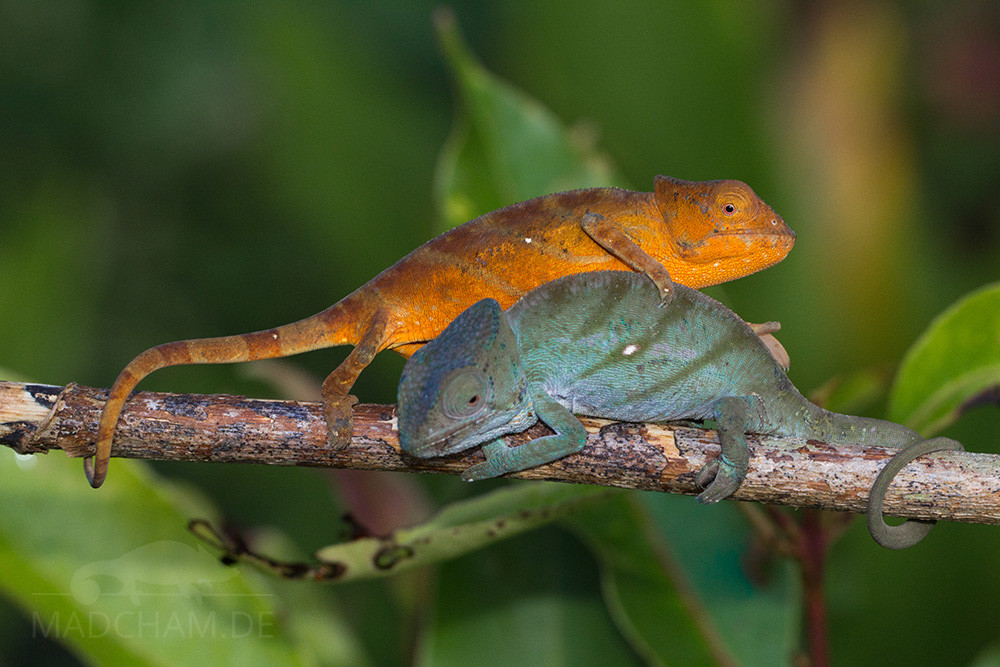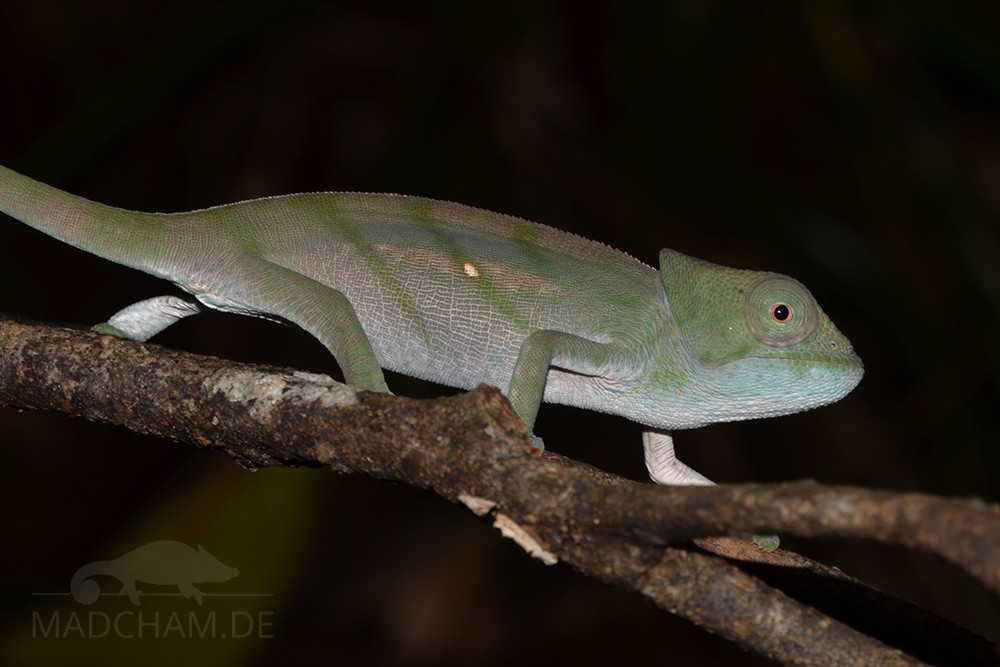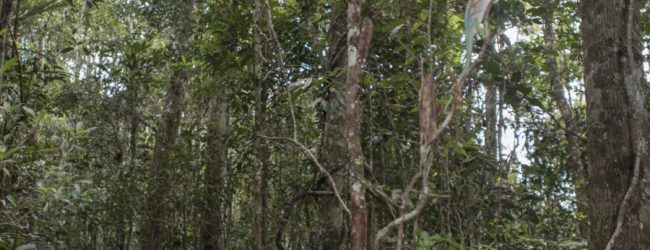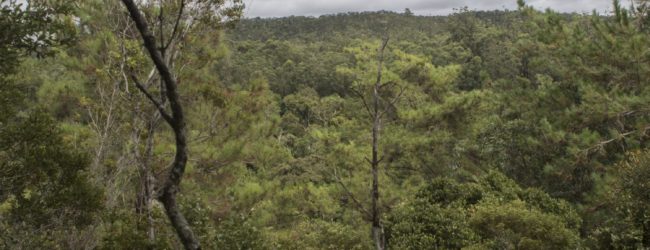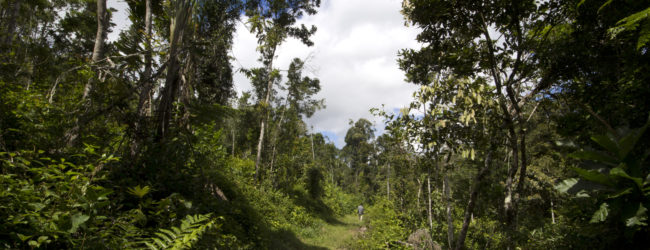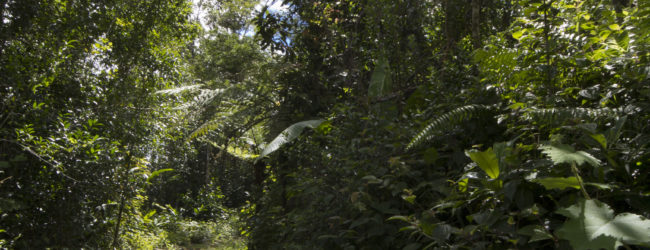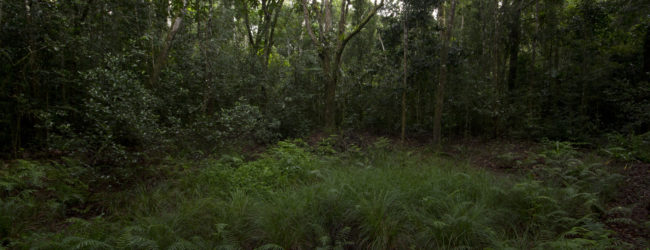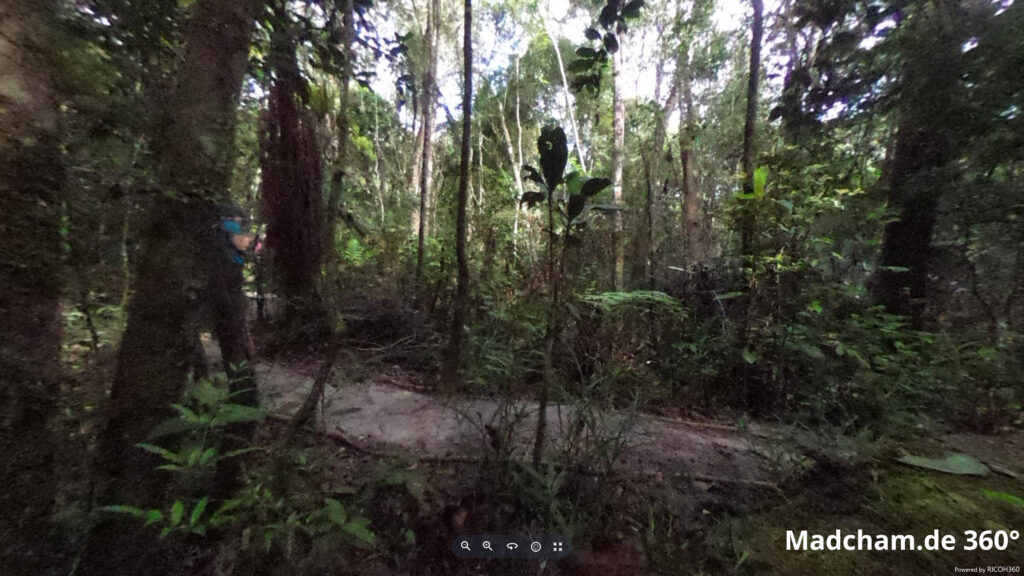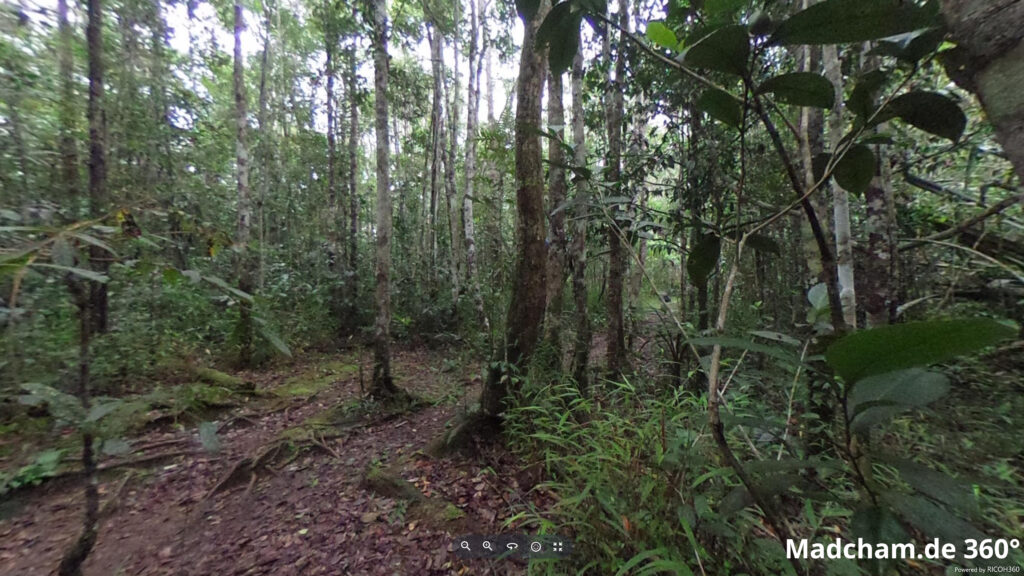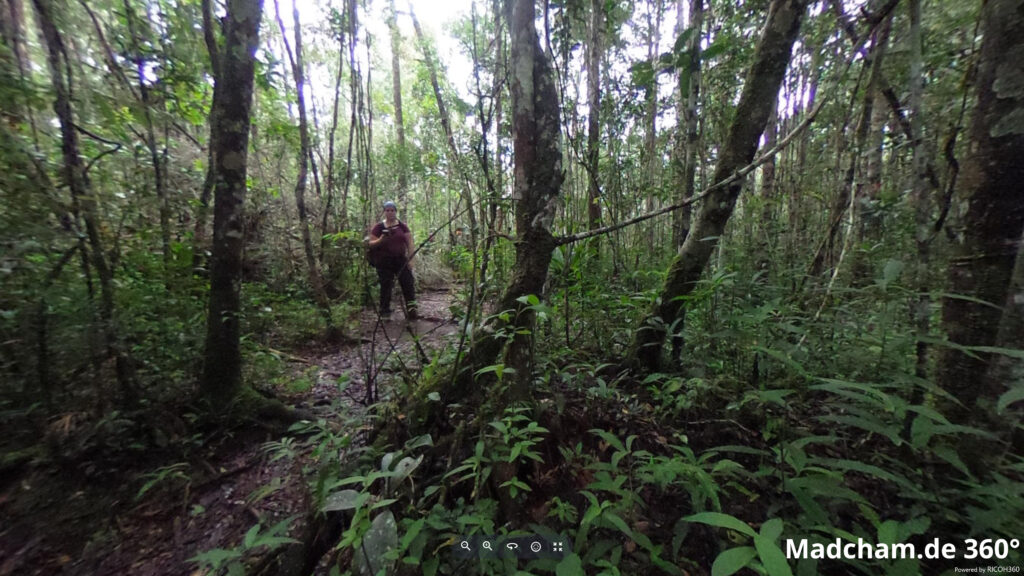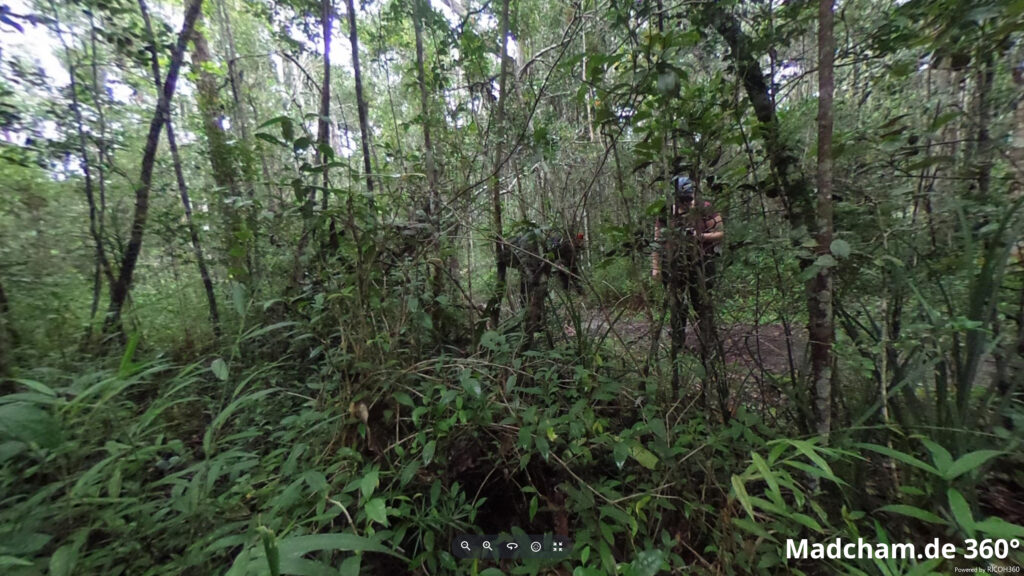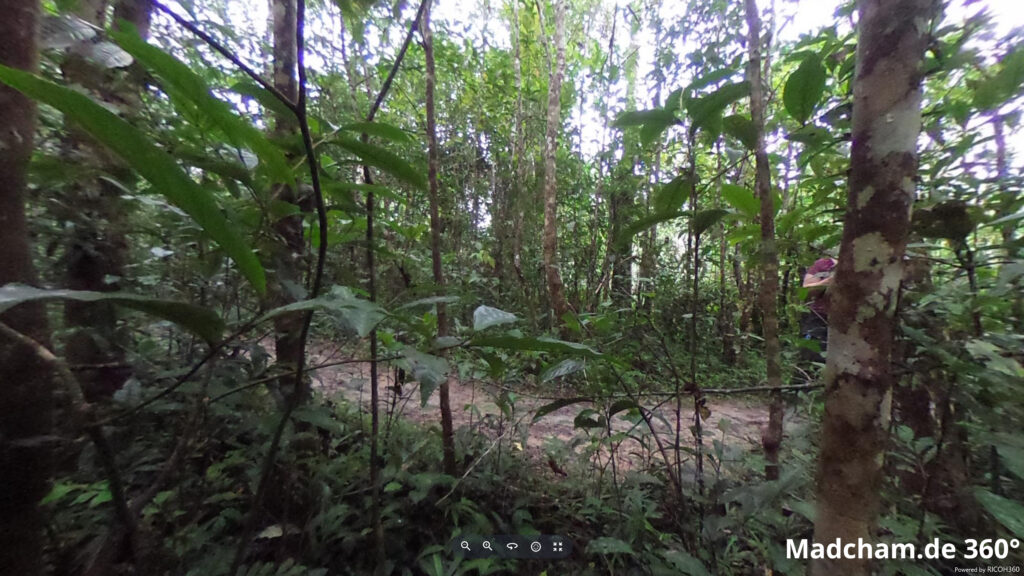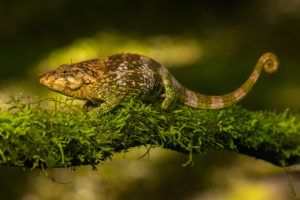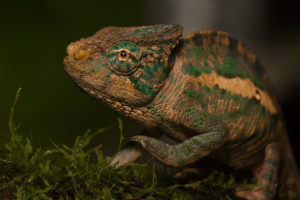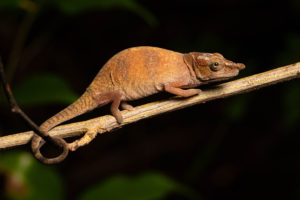2011-13 each specimens, 2014-24 each 300 specimens for legal export
First description: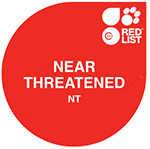
(Methuen & Hewitt, 1913)
Origin of the species name:
The English zoologist Paul Ayshford Methuen, 4th Baron Methuen, and the South African zoologist John Hewitt gave this subspecies of the Parsons Chameleon the name cristifer. Both worked at the Transvaal Museum of Pretoria (South Africa) at that time and named the subspecies after the crest of the back (Latin crista = crest), which the second subspecies of the Parsons Chameleon does not have.
Distribution:
This subspecies of the Parson’s chameleon mainly lives in the rainforest around Andasibe. They are rather easy to find in Analamazaotra and the communally led reserve V.O.I.M.M.A. The habitat is an evergreen rainforest and the animals can even be found in the gardens of hotel Feon’ny Ala. They often sit in head height.
Appearance & size:
Calumma parsonii cristifer is a little smaller than Calumma parsonii parsonii, but nevertheless has an impressive size with 55 to 60 cm total length. They have a green-turquoise basic color with different accents. Males often have a distinct orange spot on the sides, they also have two nose appendages that are characteristic of Parson’s. Females have only very small nose appendages. The easiest way to distinguish this species from its sister species is to look at the dorsal crest: Cristifer has a ridge, and parsonii has a smooth back. Until now, we could not distinguish any “locales” in this species. Males with many orange colors as well as turquoise-blueish males and even green specimen live in the same areas, partially only a few meters from each other. In females, we also could not find a difference between brown and green colored individuals, neither of which concerns age nor gravidity or finding places. In 2023, we discovered an extremely intense turquoise-coloured male, but this was a single specimen. In the following year and before, no such turquoise-coloured males of the species were discovered at the same location. The following pictures show juveniles.
Gewichtstabelle
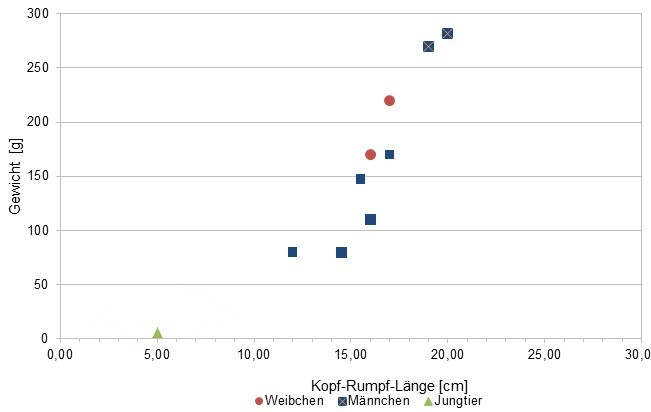
Weibchen = female, Männchen = male, Jungtier = juvenile, Gewicht = weight, Kopf-Rumpf-Länge = snout-vent-length
Since 2017 we measure the weights of Calumma parsonii cristifer found by us on Madagascar, as far as the animals (and our scales) participate. So far there are only a few weights, in the long term, an average weight in relation to the snout-vent-length (measured from the tip of the nose to the cloaca) for each species should be read off from as large a number of measurements as possible. This means that unfortunately not too much can be a readout of the current tables, but they can be the first clue. It is important to know that all weights were measured towards the end of the rainy season (= best food supply), so they are probably maximum weights in Madagascar. Triangular symbols in females do not mean pregnant, round symbols mean pregnant.
| Jan | Feb | Mar | Apr | May | Jun | Jul | Aug | Sep | Oct | Nov | Dec | |
| Average temperature | 23 | 24 | 23 | 23 | 22 | 19 | 19 | 19 | 20 | 21 | 22 | 23 |
| Minimum temperature | 20 | 20 | 20 | 19 | 18 | 15 | 15 | 15 | 15 | 16 | 18 | 19 |
| Maximum temperature | 27 | 27 | 27 | 27 | 25 | 23 | 23 | 23 | 24 | 25 | 26 | 27 |
| Rain days | 27 | 24 | 26 | 19 | 17 | 18 | 21 | 20 | 15 | 16 | 20 | 25 |
We have collected the data given above over several years with thermometers and hygrometers at the finding places of the chameleons. "Average temperature" means that values of a whole month have been calculated to one average value per month. For example all measured minimum temperature values of February have been calculated to one average minimum temperature for February. In plain language, this means single peak values of a day may be a little higher or lower than the average minimum and maximum temperatures. It is possible that a location has an average maximum temperature of 29°C, but one day during that month it had 33°C or even 35°C there.
Three examples of a daily course of temperatures in Andasibe in the rainy season can be found below. Both were recorded with data loggers in 2023.
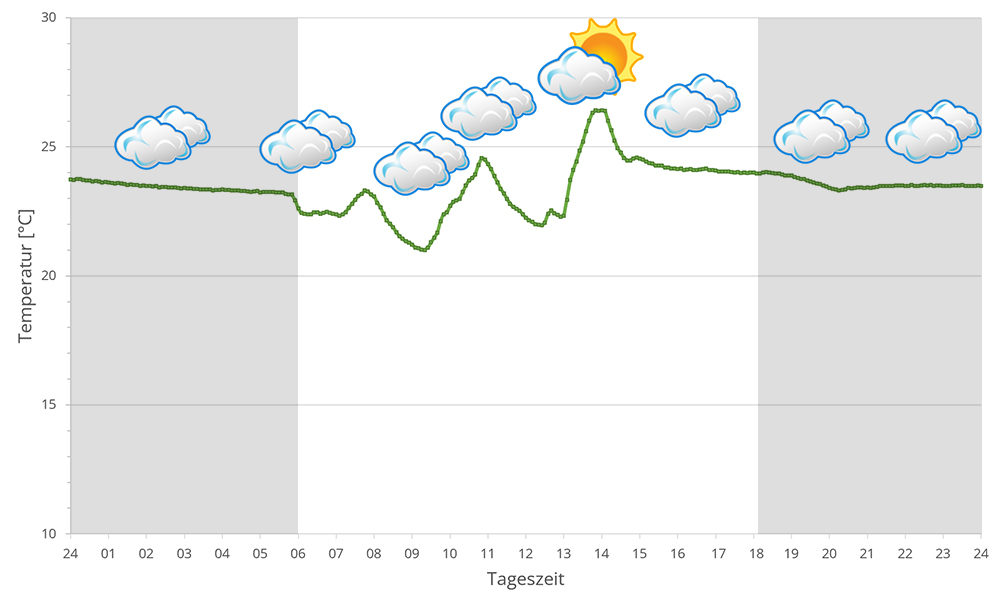
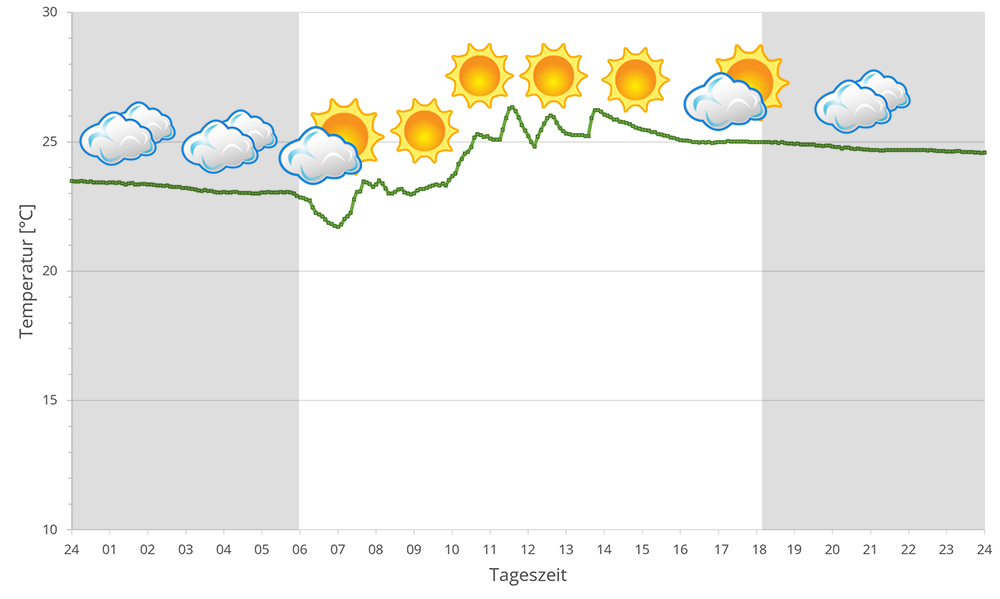
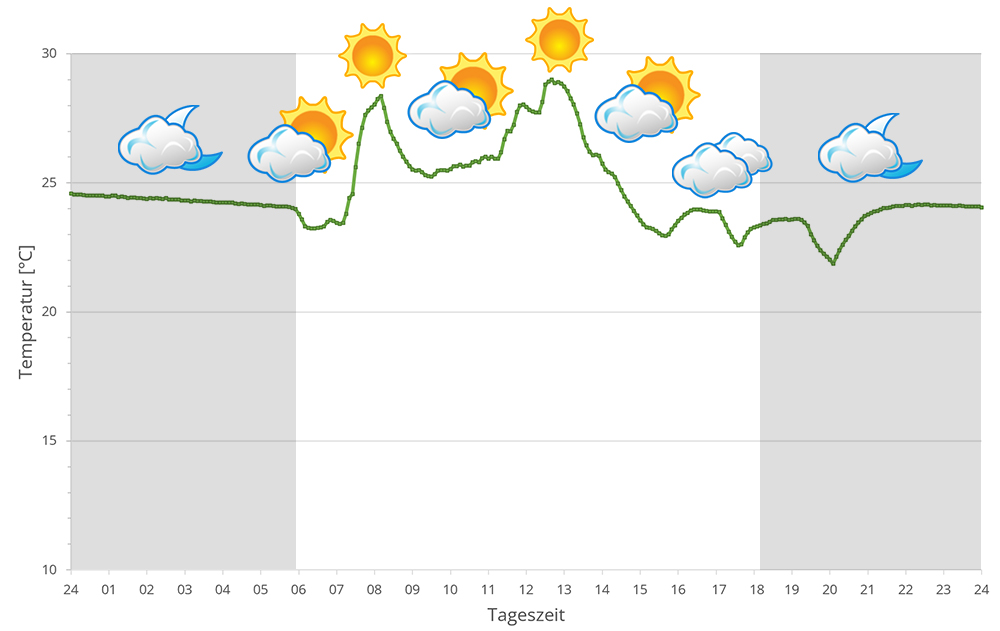
The region around Andasibe with the associated forests of Mantadia, Mitsinjo and Analamazaotra lie in the eastern highlands of Madagascar at altitudes between 900 and 1250 m above sea level. During the day, the temperature may sometimes exceed 25°C, but the thermometer rarely climbs above 30°C, or only in sunspots. At night, temperatures plummet, especially during the dry season. 10° to 15° degrees are the rule.
Humidity in the rainforests around Andasibe is high all year round. During the rainy season it rains extensively every day, sometimes the rain lasts for days. But the dry season is not massively different either, except that it has slightly cooler temperatures overall and reaches lower temperatures at night. It still rains at least every other day. Rain, high humidity and a drop in temperature at night are therefore the central points of Andasibe's climate. In 2023, we measured relative humidity with data loggers on different days in Andasibe in the rainy season, the data can be found below.
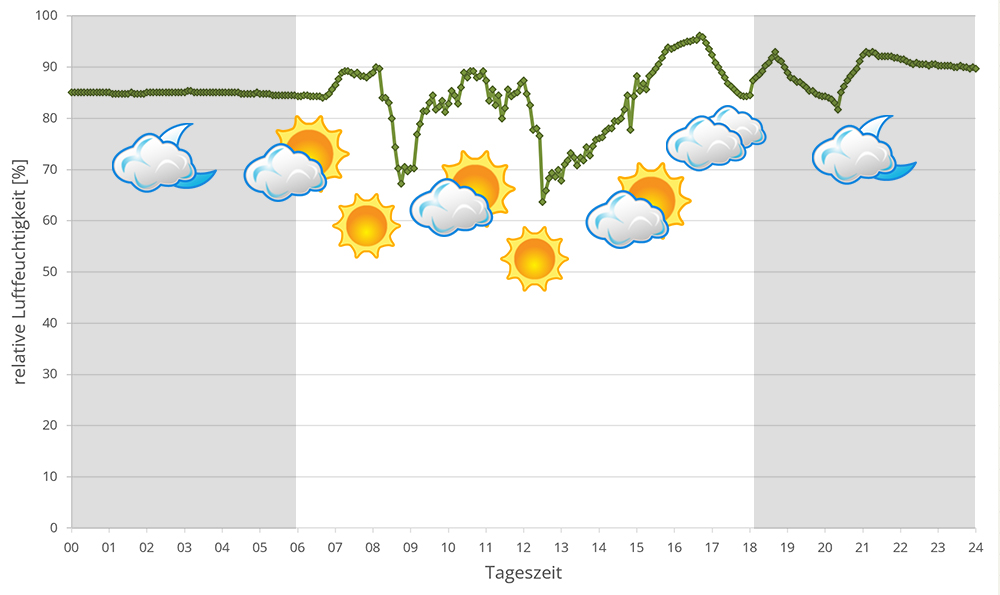
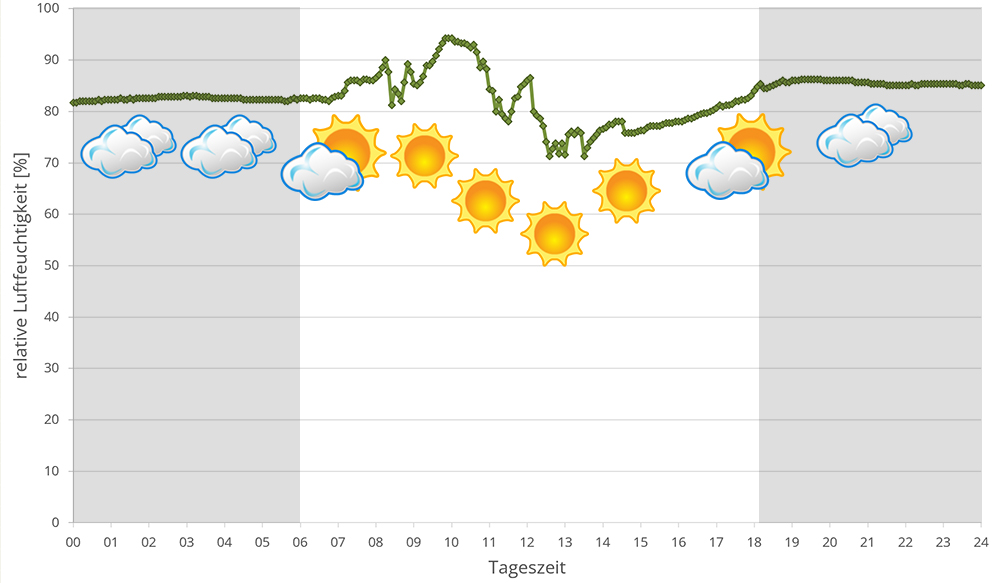
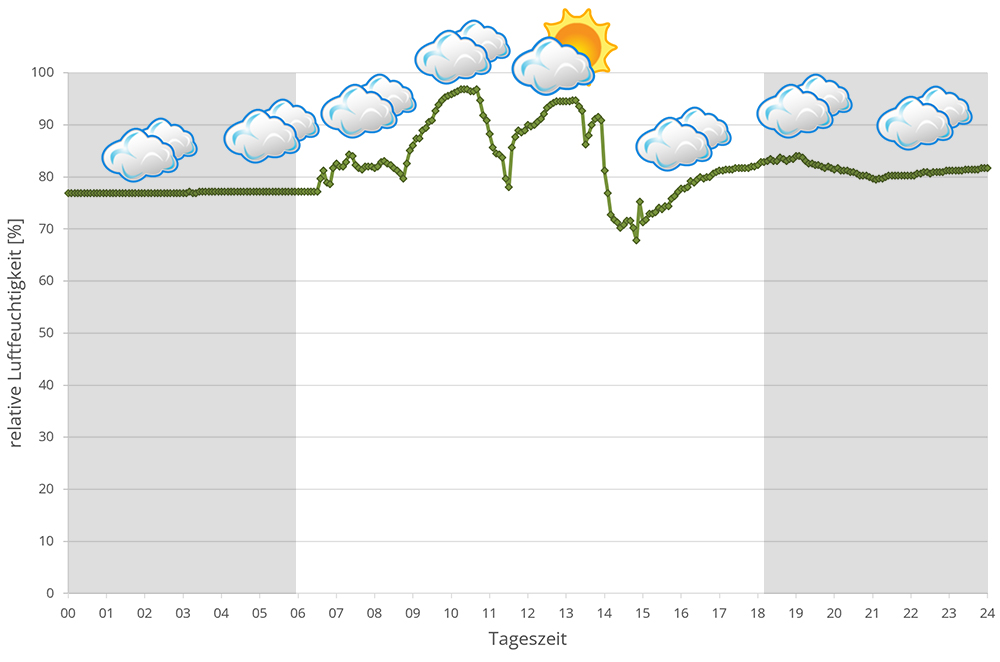
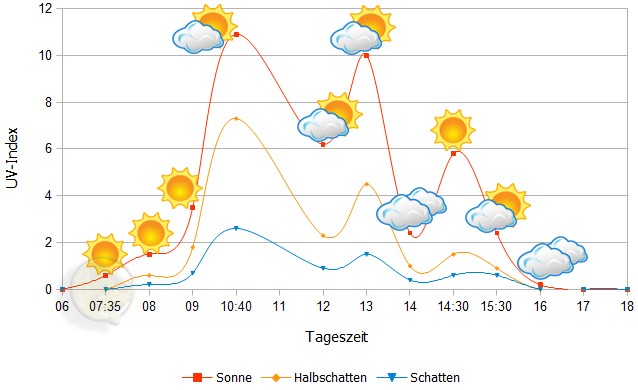
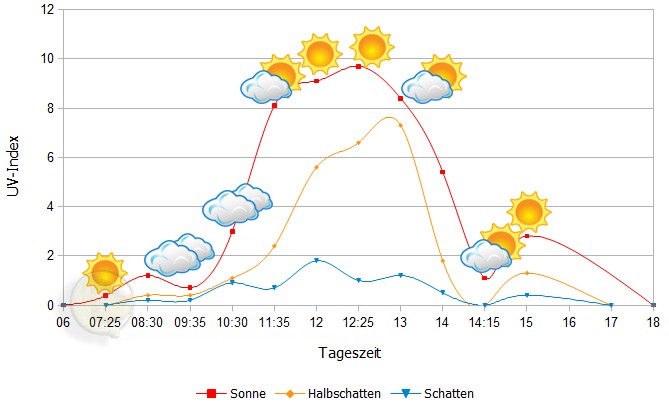 Tageszeit = day time, Sonne = sun, Halbschatten = half shade, Schatten = shade
Tageszeit = day time, Sonne = sun, Halbschatten = half shade, Schatten = shade
We have measured UVB data with a Solarmeter 6.5 in spring (March, April) at the peak of activity of chameleons in Madagascar. We always measured the values that a chameleon could maximally reach in its habitat.
| Jan | Feb | Mar | Apr | May | Jun | Jul | Aug | Sep | Oct | Nov | Dec | |
| Morning | 23,2 | 23,4 | 22,0 | 22,1 | 20,5 | 16,0 | 16,3 | 16,5 | 17,4 | 16,7 | 21,2 | - |
| Midday | 25,4 | 25,3 | 24,5 | 22,5 | 20,2 | 16,5 | 16,3 | 17,7 | 18,3 | 18,0 | 21,4 | - |
| Evening | 25,5 | 25,1 | 25,0 | 25,3 | 20,8 | 17,2 | 16,1 | 17,0 | 19,6 | 23,0 | 22,0 | - |
Between 21 March 2018 and 05 February 2019, we measured ground temperatures in the rainforest of Andasibe and surrounding areas (Analamazaotra, Andasibe, V.O.I.M.M.A. and Mitsinjo) about every other day - the table is the result of these measurements. Only in December no measurements were taken. detailed review can be found here. In total, we took 418 soil temperature measurements and measured an estimated 70 different locations in Andasibe and the surrounding area at a depth of 20 cm.
In 2023, in addition to other climate data, we also measured the air pressure at the locations we visited in Madagascar. The following data is from different days during the rainy season in Andasibe. On the X-axis is the time of day or night. In Madagascar, the day begins around 6 am, and night falls at 6 pm. The Y-axis shows the atmospheric pressure in hPa.
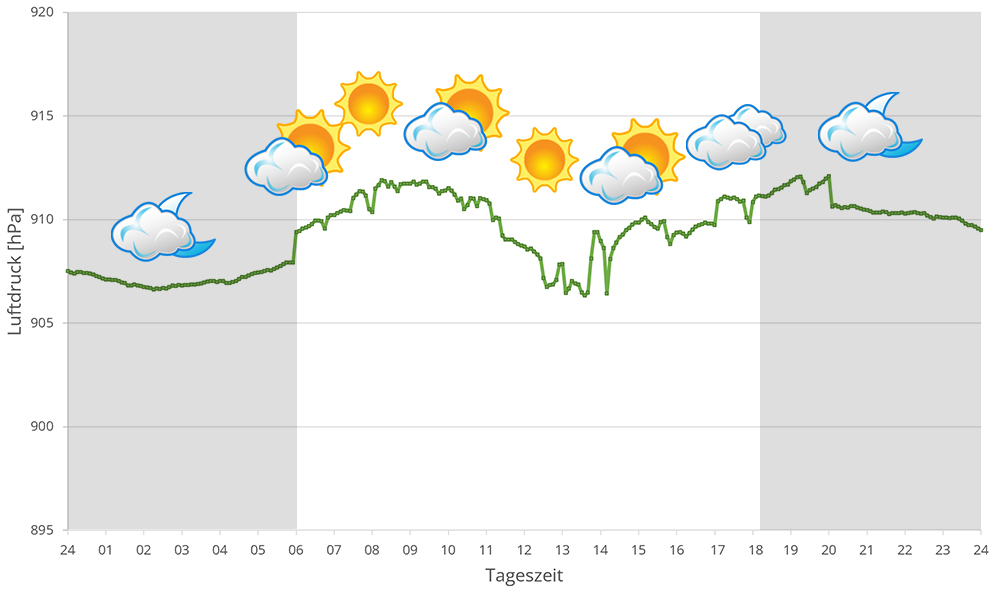
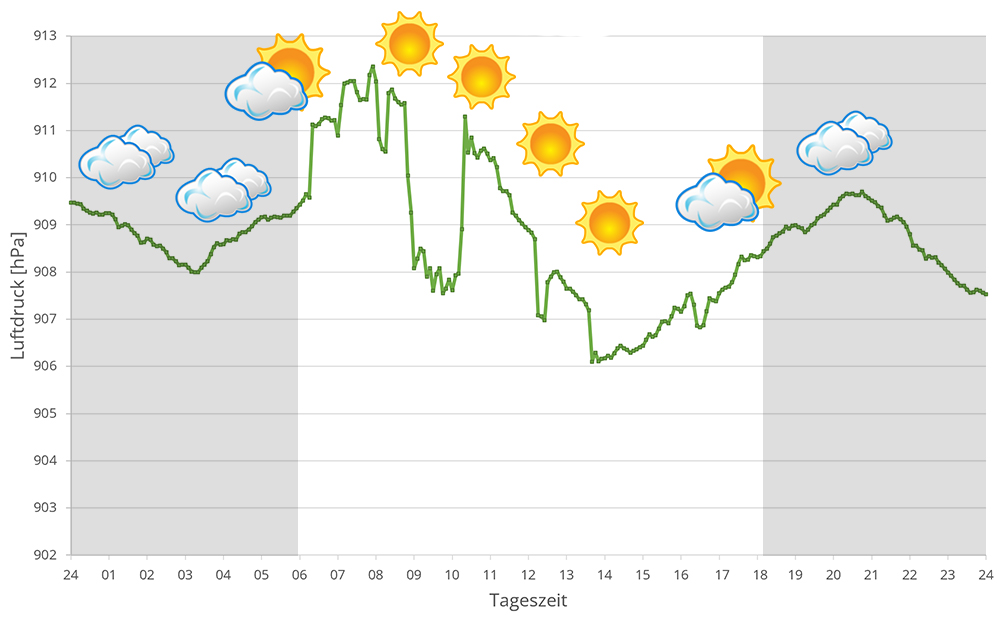
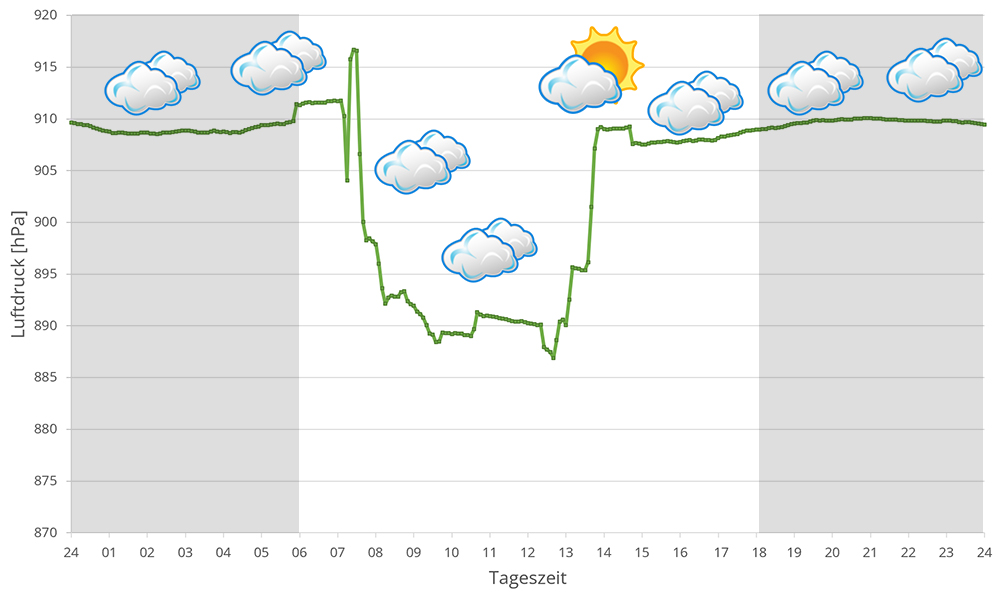
Habitat:
The following pictures show habitats of Calumma parsonii cristifer in the region of Andasibe. Some are even from finding places of the species. The rainforest of this area consists of slender trees. Calumma parsonii cristifer prefers high trees with thick branches inside the rainforest. Sometimes you can also find them in secondary vegetation when there’s nothing else around.
Below you will find some 360° images of rainforests in Andasibe and Analamazaotra that we took during the rainy season. If you click on the respective image, the pictures will open in an enlarged view in a separate window. You can use the mouse to rotate in all directions. You also have the option of running the images in full-screen mode. Have fun looking at them!

